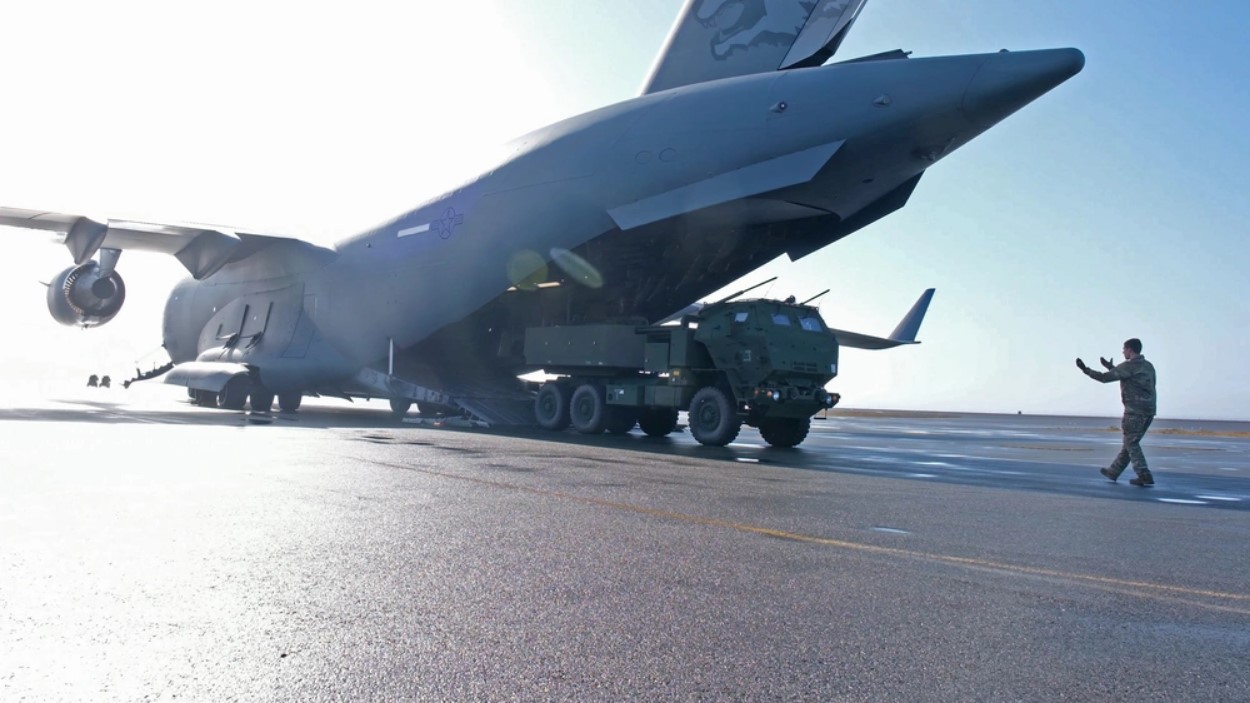
The U.S. Army sent paratroopers, radar platoons and at least one M142 High Mobility Artillery Rocket System to a tiny island off of Alaska this week, in a sudden show of force projection following recent Russian and Chinese fly bys.
Troops with the 11th Airborne Division, as well as the the 1st and 3rd Multi Domain Task Forces, deployed to Shemya Island, part of the Aleutian Islands, on Sept. 12.
The Air Force, as well as the Alaska Air National Guards’ 176th Wing, ferried the troops and equipment to Shemya Island. Once there, they worked quickly to set up the HIMARS system and get into position, to show how quickly the military could deploy. Radar platoons set up Q-53 radars near the coast, while soldiers took position around the island.
The force project event is partially a response to a joint Russian and Chinese bomber aircraft patrol in the Pacific in July. Four bombers flew inside of the Alaska Air Defense Identification Zone, prompting the United States and Canada to send six fighter jets, including American F-35s and F-16s plus Canadian CF-18s to intercept the planes.

“As the number of adversarial exercises increases around Alaska and throughout the region, including June’s joint Russian-Chinese bomber patrol, the operation to Shemya Island demonstrates the division’s ability to respond to events in the Indo-Pacific or across the globe, with a ready, lethal force within hours,” 11th Airborne Division commander Maj. Gen. Joseph Hilbert said in a statement; it’s unclear if he meant the patrol in July or not.
Subscribe to Task & Purpose Today. Get the latest military news and culture in your inbox daily.
While Hilbert cited the earlier incident as part of the reason behind the mobilization, the Army went to Shemya Island a day after more Russian planes flew close to Alaska. According to NORAD, two Russian jets flew into the Alaska Air Defense Identification Zone, although they did not enter American airspace.
Shemya Island is home to the COBRA DANE radar system, operated by the United States Space Force (previously the Air Force oversaw it), that is used for tracking ballistic missiles and similar objects. It is also home to an air station. The Aleutian Islands were also a battleground during World War II, with the Japanese military seizing several of the islands before the United States retook them.
The force projection in the Aleutians is expected to last several days, according to the Army.
The Department of Defense released an updated Arctic Strategy earlier this year, outlining the threats posed by a warming climate, including greater areas of operations for adversaries in the north. The strategic report heavily noted recent Chinese and Russian collaboration, including a joint naval patrol in 2023.
